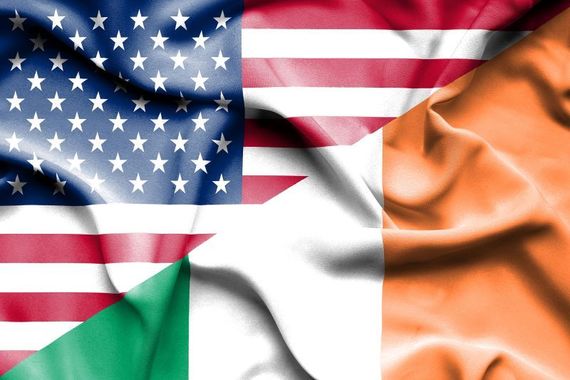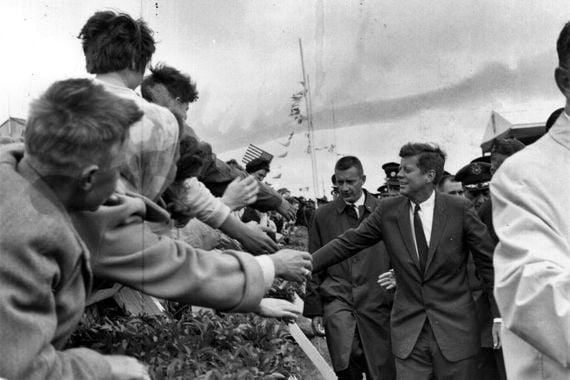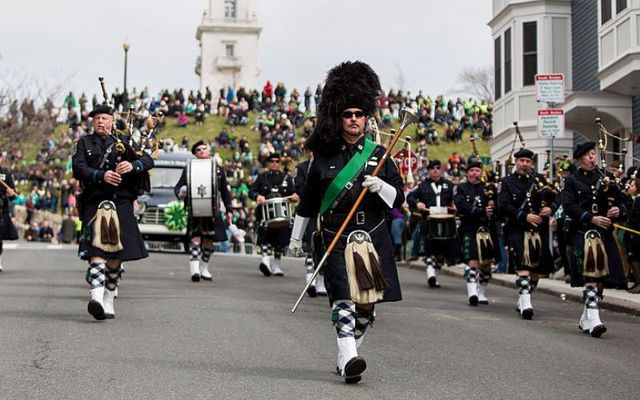Learn how Irish Famine immigrants created a lasting impact in Boston and influenced American politics, culture, and music.
Editor's Note: This article is in partnership with the Irish Heritage program. You can plant a tree with the Irish Heritage Tree and commemorate the Irish Famine immigrants who made a home for future generations in America.
The Irish in Boston
In 1847, the first big year of Famine emigration from Ireland to America, the city of Boston was overwhelmed with the arrival of 7,000 Irish Catholics arriving at its port.
By 1885 Irish immigrants and their native-born children totaled 154,861, more than the entire population of the city in 1845.
Arriving in Boston the Irish immediately settled into the lowest rung of society and fought a daily battle for survival. At first discriminated against, these immigrants built a strong community centered on family, church, schools, business, and political organizations.
Irish Famine immigrants created a lasting impact in Boston 
How the Irish changed Boston
Most of the immigrants during this period were poor Irish citizens from rural backgrounds, who settled in areas that became exclusively Irish near the Boston waterfront along Batterymarch and Broad Streets, then in the North End section and in East Boston.
Irish men took any unskilled jobs they could find such as cleaning yards and stables, unloading ships, and pushing carts, while many Irish women became domestic servants.
The Irish eventually discovered the path to making a difference and changing the discrimination they were being faced with, laid in the local ballot box. The sons and grandsons of Famine immigrants joined the Democratic Party first getting elected to city councils, later to the mayor's office itself with Hugh O’Brien becoming the first Irish-Catholic mayor of Boston in 1884.
John F. Kennedy was a descendent of Irish Famine immigrants
The most extraordinary Famine descendant in American politics was of course John F. Kennedy. Born in the area of Brookline outside Boston, Massachusetts, JFK was the great-grandson of Patrick Kennedy, a farmer from County Wexford who left Ireland in 1849.
John F. Kennedy would later go on the be the first Catholic elected President of the United States. To millions of Irish Catholic Americans, Kennedy's election in 1960 signaled an end to the century-long struggle for full acceptance in the U.S.
Influence of the Irish in Boston today
Today Boston continues to hold a strong connection with the Irish and the influence of the heritage can be found in many areas within the city.
In 2013 Boston hosted the 43rd World Irish Dancing Championships, Celtic punk band, Dropkick Murphys originated in Boston, while the mascot of the basketball team, the Boston Celtics is "Lucky the Leprechaun" and is a nod to the city's large Irish population.
Did you know that the city also has its own Éire Society of Boston which promotes the knowledge of Irish culture and raises awareness of the contributions to civilization made by the Irish and those of Irish ancestry?
Irish Famine Memorial in Boston
The Boston Irish Famine Memorial is part of the city’s Irish Heritage Trail and is located on a plaza between Washington Street and School Street.
Unveiled in June 1998, the sculpture depicts two Irish families; one suffering during the Famine in Ireland, and another Irish family thriving, having found prosperity in the United States. The memorial also features eight narrative plaques that provide historical context for the Irish famine as well as famines in modern times in Africa and other places.
For more information visit www.IrishHertiageTree.com
H/T: Massachusetts Historical Society





Comments